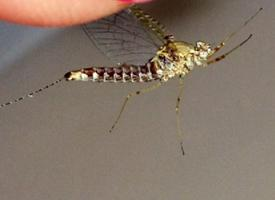
Váhy a míry
| Délka | 0,5 cm |
|---|
Popis zvířete
The Common House Mosquito, scientifically known as Culex pipiens, is a species of small, flying insect that belongs to the family Culicidae. This species is of significant interest to public health due to its role as a vector for various diseases. Found across many parts of the globe, Culex pipiens has adapted to thrive in close proximity to human habitats, making it a common nuisance in both rural and urban settings.Morphologically, the Common House Mosquito is a slender insect with a body length typically ranging from 4 to 10 millimeters. Its body is divided into three primary segments: the head, thorax, and abdomen. The head houses compound eyes, antennae, and a proboscis; the latter is a specialized mouthpart used for piercing skin and sucking blood. The thorax is equipped with two wings and six legs, allowing for flight and mobility. The abdomen is segmented and can expand considerably after a blood meal. In terms of coloration, Culex pipiens generally exhibits a pale brown hue with darker stripes or patterns across its body, although this can vary somewhat between individuals.
Culex pipiens is a nocturnal feeder, primarily active during twilight and nighttime hours. Females of the species are hematophagous, meaning they require blood meals to develop their eggs. While they can feed on a variety of mammals, including humans, they also feed on birds, which are their preferred hosts. The males, in contrast, feed on nectar and do not bite. After feeding, females lay their eggs in stagnant or slow-moving water, where they hatch into larvae. The larvae, commonly known as wrigglers, are aquatic and undergo several molts before transforming into pupae. The adult mosquitoes emerge from the pupal stage after a few days, ready to mate and continue the cycle.
The ability of Culex pipiens to transmit diseases to humans and animals is perhaps its most notable characteristic. It is a vector for the West Nile virus, St. Louis encephalitis virus, and filariasis-causing parasites, among others. The spread of these diseases is facilitated by the mosquito's feeding behavior, which involves piercing the skin of a host with its proboscis and injecting saliva that contains anticoagulants to prevent blood clotting. If the mosquito is carrying a pathogen, it can be transmitted to the host during this process.
Control and management of Culex pipiens populations are crucial for reducing the risk of disease transmission. Strategies include eliminating standing water where mosquitoes breed, using insect repellents, and implementing community-wide insecticide application programs. Additionally, public education on preventing mosquito bites and breeding is an essential component of mosquito control efforts.
In summary, the Common House Mosquito, Culex pipiens, is a small but impactful insect species known for its role in spreading diseases to humans and animals. Its close association with human habitats and its ability to thrive in a variety of environments make it a persistent public health challenge. Effective management and control of this species are critical for reducing its impact on human health and well-being.
Nové fotografie zvířat
Top 10 zvířat
- Chinese water dragon (Physignathus cocincinus)
- Galápagos tortoise (Geochelone nigra complex)
- Sea urchins (Echinoidea)
- Diana monkey (Cercopithecus diana)
- Dolphin gull (Leucophaeus scoresbii)
- Moustached guenon (Cercopithecus cephus)
- Japanese macaque (Macaca fuscata)
- Royal penguin (Eudyptes schlegeli)
- Hen harrier (Circus cyaneus)
- Barbary macaque (Macaca sylvanus)